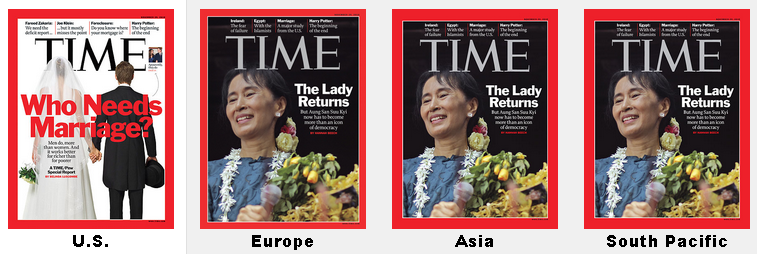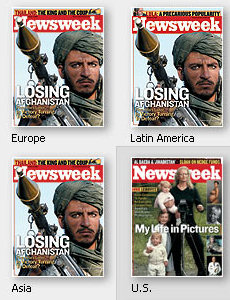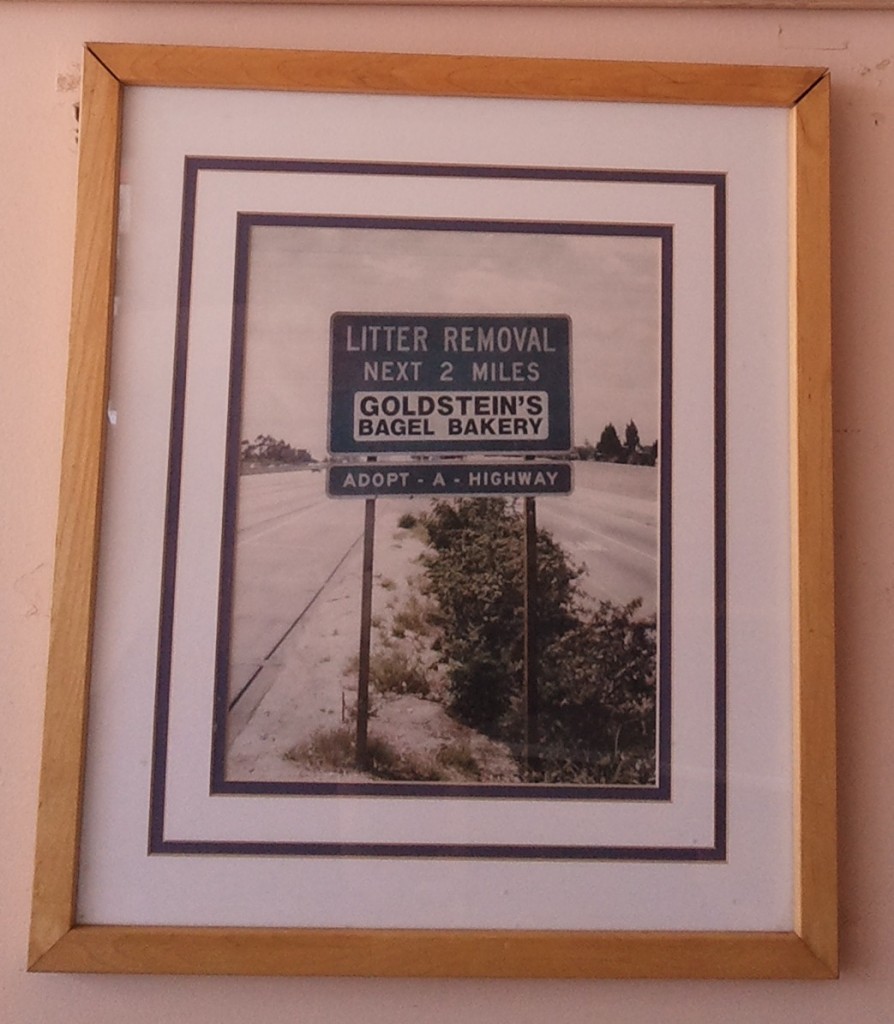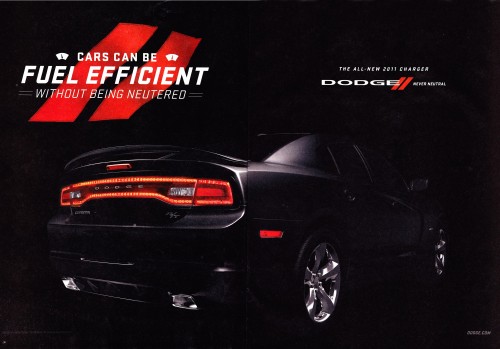Updated; originally posted July 2009.
Americans are notorious for their ignorance of global issues and international news. This may be because Americans aren’t interested or it may be that our news outlets feed us fluff and focus us only on the U.S. Probably it’s a vicious cycle.
This month, for example, Time magazine’s cover story is about the political strife in Egypt… everywhere except the U.S. that is. Americans get “pop psychology” (via Global Sociology):
It turns out you can go to the Time website and compare covers from previous issues going back a long ways. Here are some more examples from the last couple years (I cherry picked just a bit):




Dmitriy T.M. sent in these previous examples a while back.
The cover story for Newsweek magazine’s September 2006 edition was “Losing Afghanistan” in Europe, Latin America, and Asia. It was “My Life in Pictures,” a story about the photographer Annie Liebovitz in the U.S. (via):

The cover story for Newsweek magazine’s October 2006 edition was “Global Warming’s First Victim” in Europe, Latin America, and Asia. It was “Off Message,” a story about Republican Congressman Mark Foley’s sexually suggestive emails and IMs to teenage boys (via):

The cover story for Time magazine’s April 2007 edition was “Talibanistan” in Europe, Latin America, and Asia. It was “Why We Should Teach the Bible in Public Schools” in the U.S. (via, also see Time):
As SocProf writes:
Talk about self-fulfilling prophecy: Americans are assumed to not be interested in international and global affairs… ergo, Time decides to replace a perfectly legitimate and newsworthy cover on a significant event in Egypt with some pop psychology item. As a result, Americans are less informed and knowledgeable on global affairs because they do not get intelligent coverage on that topic.
Lisa Wade, PhD is an Associate Professor at Tulane University. She is the author of American Hookup, a book about college sexual culture; a textbook about gender; and a forthcoming introductory text: Terrible Magnificent Sociology. You can follow her on Twitter and Instagram.








